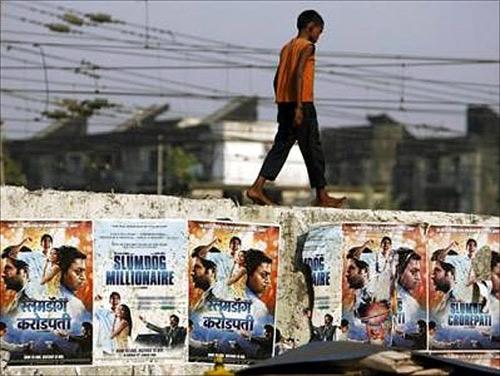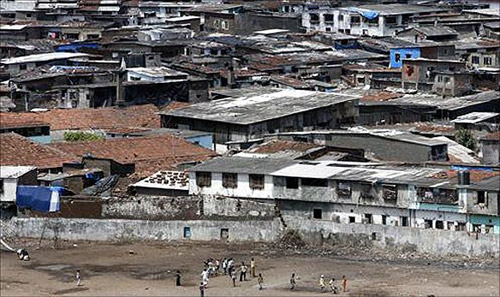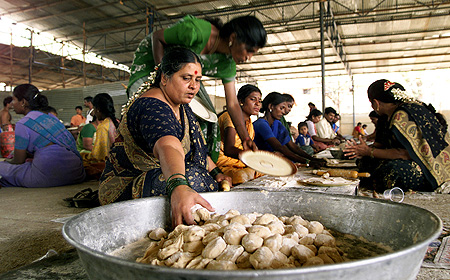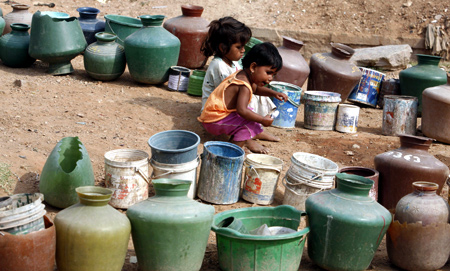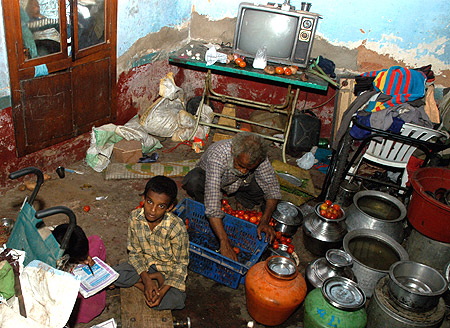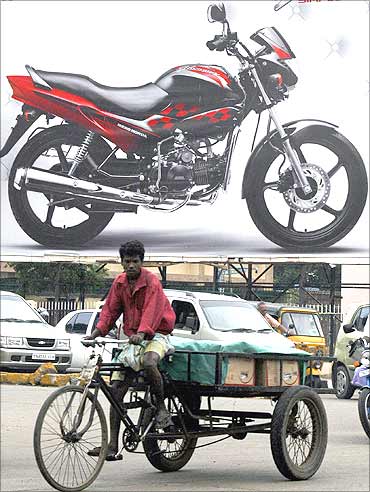 | « Back to article | Print this article |
How India's urban poor also help the economy grow
Most informal enterprises in slums employ local residents, generating benefits for the local economy. They make profits, pay rent and taxes, Kala Seetharam Sridhar and A Venugopala Reddy point out.
India's urban poverty is over 25 per cent. Rightly, the Reserve Bank of India has asked banks to bring metropolitan areas under the lead bank scheme for the first time since 1969, a move aimed at providing to the urban poor doorstep banking and direct transfer of cash benefits under social welfare programmes.
The central bank has admitted that financial exclusion is not merely a rural phenomenon.
Since policy makers have always viewed the urban poor as burdens on public services and infrastructure, the apex bank's initiative is a step in the right direction.
Click NEXT to read more...
How India's urban poor also help the economy grow
Studies we have completed at the Public Affairs Centre in Bangalore and Chennai show that, while the urban poor contribute significantly to the city economies where they are located, only 5 per cent of the informal enterprises in Bengaluru and 2 per cent of surveyed enterprises in Chennai approached a bank for a loan.
Only 30 per cent and 35 per cent of respondents respectively in Bengaluru and Chennai's slums had a bank account.
While it is generally accepted that the informal sector is unrelated to the formal sector, we find there are significant formal-informal sector linkages, with more than half (53 per cent) of the poor each in Bangalore and Chennai providing services to organised activity, and with 65 per cent and 57 per cent of the income of the urban poor originating in formal sector activity such as construction, manufacturing, government service, and private organisations.
Click NEXT to read more...
How India's urban poor also help the economy grow
Based on our survey of slum households in Bengaluru, and aggregation of these at the city level we find that the average slum household's monthly income is roughly Rs 7,685 and expenditure is Rs 5,890, leaving savings per household of Rs 1,795, with one-third of property owners in the surveyed slums paying property tax.
Most informal enterprises in slums service and employ local residents, generating benefits for the local economy (this is true in Chennai, too).
They make profits, pay rent and taxes. Aggregating, we find that slums containing about 15 per cent of the city's population, contribute anywhere from 3-3.5 per cent of Bengaluru's economy - less than proportionate, but reasonable.
Click NEXT to read more...
How India's urban poor also help the economy grow
A similar exercise for Chennai finds that, on average, the slum household's monthly income is roughly Rs 9,330 and expenditure is Rs 8,060, leaving savings per household of Rs 1,270.
Slums, which contain 19 per cent of Chennai's population, contribute to about 14 per cent of the city's economy.
We found that informal enterprises in Chennai contribute 1.2 per cent of the total contribution of slums to the city economy, when compared with only 0.21 per cent in Bengaluru.
Thus while the majority of the contribution to the city economy is made by households in both the cities, the relative contribution of enterprises is higher in Chennai.
Click NEXT to read more...
How India's urban poor also help the economy grow
Overall, we find that in Chennai, slums are larger in proportion than in Bengaluru, and also contribute a significantly higher proportion to the city economy than in Bengaluru.
However, Chennai's per capita income is lower than that of Bengaluru.
The non-agricultural gross district domestic product or GDDP in current prices of Chennai, Kanchi and Tiruvallur districts (all of which are part of the extended Chennai corporation) for 2005-06 is much smaller (being Rs 30,37,742 lakh) than Bengaluru's non-agricultural GDDP for that year (Rs 47,37,980 lakh). There could be under-reporting of GDDP.
Click NEXT to read more...
How India's urban poor also help the economy grow
Based on discussions with the Tamil Nadu Directorate of Economics and Statistics, in Chennai, most of the manufacturing that contributes to the city's GDP is beyond the city corporation boundaries.
But in Bengaluru, the high contributors to the city's GDP - the IT industries - are located very much within the city boundaries. This explains Bengaluru's higher GDDP compared to that of Chennai.
The average annual per capita income of the slums under Chennai corporation is Rs 31,236, whereas it is much lower in Bengaluru's slums, where it is only Rs 16,844.
We find significant under-reporting of incomes of the urban poor in Bengaluru, when compared to Chennai, for the same occupations (e.g., a driver in Bengaluru reportedly earns on average only Rs 5,550 a month whereas a driver in Chennai earns Rs 8,437 on average, both based on our surveys).
Click NEXT to read more...
How India's urban poor also help the economy grow
This could be partly due to the fact that the government of Tamil Nadu is quite generous as far as worker salaries are concerned.
We found that a driver in Tamil Nadu who has about 13 years of experience in the government, earns about Rs 24,000 a month, whereas the maximum income a driver with eight years of experience reported in Bengaluru was only Rs 10,000.
This is also consistent with the data in India Labour Report by TeamLease, where we found minimum wages in Tamil Nadu are Rs 91 a day, compared to only Rs 88 in Karnataka.
Click NEXT to read more...
How India's urban poor also help the economy grow
Finally, Chennai is smaller than Bengaluru, with a population of 6.6 million (which is the extended area of the Chennai corporation of 429 square km after the merging of surrounding areas into the Chennai corporation limits, which occurred in September 2011), compared with Bengaluru's 8.43 million.
However, Chennai's poor are more in number than that of Bengaluru's, constituting 18.5 per cent of the city population. In Bengaluru, the poor (measured by those living in slums) constitute 15 per cent of the city population.
Given these startling findings, there may be a case for the ministry of housing and urban poverty alleviation to understand and assess the contribution made by the urban poor in all cities of the country, to formulate sustainable policies which support urban poverty reduction.
The writers are with Public Affairs Centre. These views are their own.
Comments from Samuel Paul are gratefully acknowledged, as is support from DFID and the ministry of housing and urban poverty alleviation for the Bangalore study and the South Asia Network of Economic Research Institutes for the Chennai study.
